Art World
Attention Hollywood! Here Are 10 Historical Artists With Lives So Spellbindingly Dramatic They Need Their Own Biopics Right Away
We've even got recommendations for which big-name actors can play each part.

We've even got recommendations for which big-name actors can play each part.

Katie White

Artist biopics have a rich history, and our collective appetite for them seems to know no bounds, with movies about Van Gogh, Giacometti, and Cézanne hitting the big screen in the past few years. And much to our delight, it was recently announced that a film about Surrealist painter Leonora Carrington’s whirlwind, cross-continental life is currently in production.
This got us wondering: why it is that certain artists (*cough cough* Van Gogh) seem to get all the silver-screen love, while other artists’ equally dramatic lives go overlooked? Hoping that we’ve got a film executive in our audience, we’ve pulled together an incomplete and unscientific list of artists who deserve the Hollywood moment, along with casting suggestions to get the ball rolling.
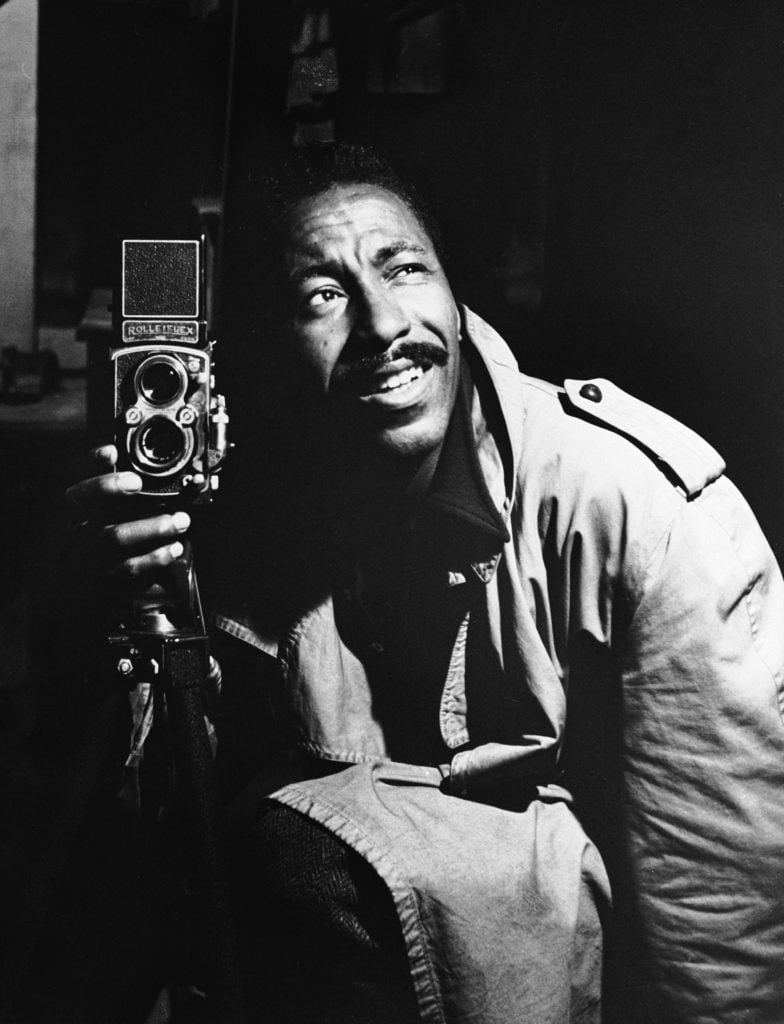
Self-portrait by photographer Gordon Parks. Courtesy of the Gordon Parks Foundation.
It it weren’t true, the arc of this story would seem pretty far-fetched.
Gordon Parks is known today as a leading photojournalist of the 1940s, and one of the first black major motion picture directors. But his beginnings were incredibly humble. Born in Fort Scott, Kansas, in 1912, the youngest of 15 children, Parks attended a segregated elementary school where his dreams of higher education were actively discouraged.
After his mother died when he was just 14, Parks was left to fend for himself, moving throughout American cities working as a singer and piano player in flop houses and brothels (where he was always keen to see what they had in their libraries). He also worked as a waiter and even, for a time, as a semi-profesional basketball player.
At the age of 25, Parks bought a camera at a pawn shop after some photographs of migrant workers in a magazine inspired him to see the camera as a tool for social change. In the 1940s, he joined the Farm Security Administration photography program, documenting poverty across the United States. Later in life, he would focus his attention on cinema, becoming the acclaimed director of the 1971 detective film Shaft.
We’d Cast: Jordan Peele or Mahershala Ali
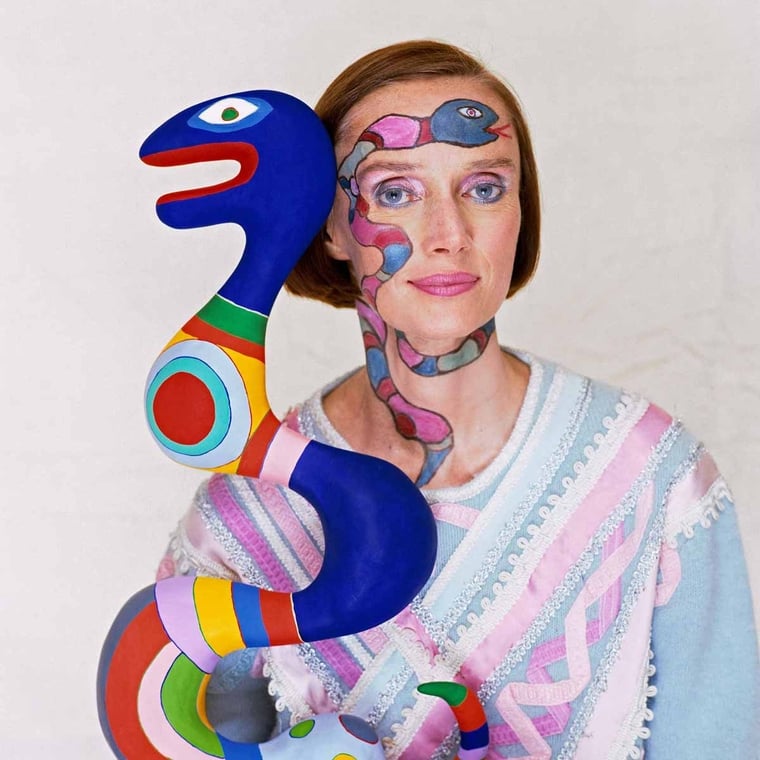
Niki de Saint Phalle (1930–2002), photographed with one of her sculptures. Photo: Courtesy of the Norman Parkinson gallery.
This movie would have at least one perfect setting: Saint Phalle’s immersive Tarot Garden, a fantastical, colorful, tarot-inspired sculpture park in Tuscany. But while Saint Phalle is famed for her expressive, jubilant artworks, the largely self-taught artist lived through some dark times.
Born in 1930 into a deeply conservative Catholic family, Saint Phalle was routinely emotionally and sexually abused by her father during her childhood, an experience she wrote about later in life. Married at just 19, she had two children in her early 20s, and at 23, she suffered a nervous breakdown and was treated with electroshock therapy.
But Saint Phalle proved resilient. By her late twenties, her evocative assemblages, made by firing a rifle at balloons filled with paint, started to gain attention. These works, and her later more joyful sculptures of animals, women, and mythical creatures, embodied her lifelong feminist spirit.
And (in a Hollywood happy ending) her personal life found harmony as well: she became a frequent collaborator with other artists, but particularly Jean Tinguely, the Swiss kinetic artist who would become her second husband.
We’d Cast: Audrey Tautou or Julie Delpy
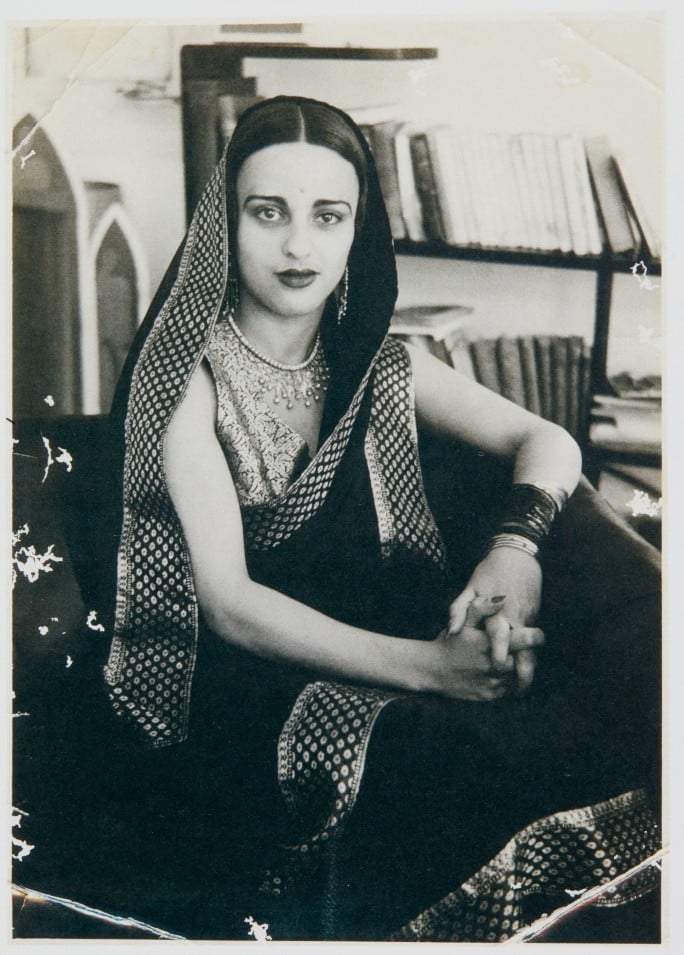
Amrita Sher-Gil (circa 1930s). Photo by Dalip Singh. Reproduced from V. Sundaram, Amrita Sher-Gil: A Portrait in Letters & Writings, Vol. 2, Tulika Books, New Delhi, 2010, p. 626, courtesy of Sotheby’s India.
Amrita Sher-Gil, who has been called the “Frida Kahlo of India” for her vibrant mashup of Eastern and Western styles, lived an all-too-brief but fascinating life.
Born in Budapest in 1913, she was the daughter of a Hungarian-Jewish opera singer and a Jat Sikh aristocrat scholar. Her early childhood was privileged, and she received formal painting lessons until financial disaster struck the family and led them to return to India. There, she blossomed artistically, finding inspiration country’s people, subjects that would earn her a reputation as a pioneer of Modernism.
In her lifestyle, Sher-Gil was wholly unconventional. As a child, she was expelled from school for declaring herself an atheist. She engaged in numerous affairs with both men and women, married her Hungarian first cousin, supported Gandhi’s politics despite her family’s ties to the British Raj, and even entertained an intimate friendship with the Indian Prime Minister Jawaharlal Nehru—whom she refused to paint on the grounds that he was too handsome. (Her father burned their letters, so the extent of their relationship is lost to history).
At 28, just days from the opening of her first major solo show, she fell into a sudden coma and died soon after. Though the facts are uncertain, it is believed that she succumbed to an infection after a failed abortion.
We’d Cast: Priyanka Chopra
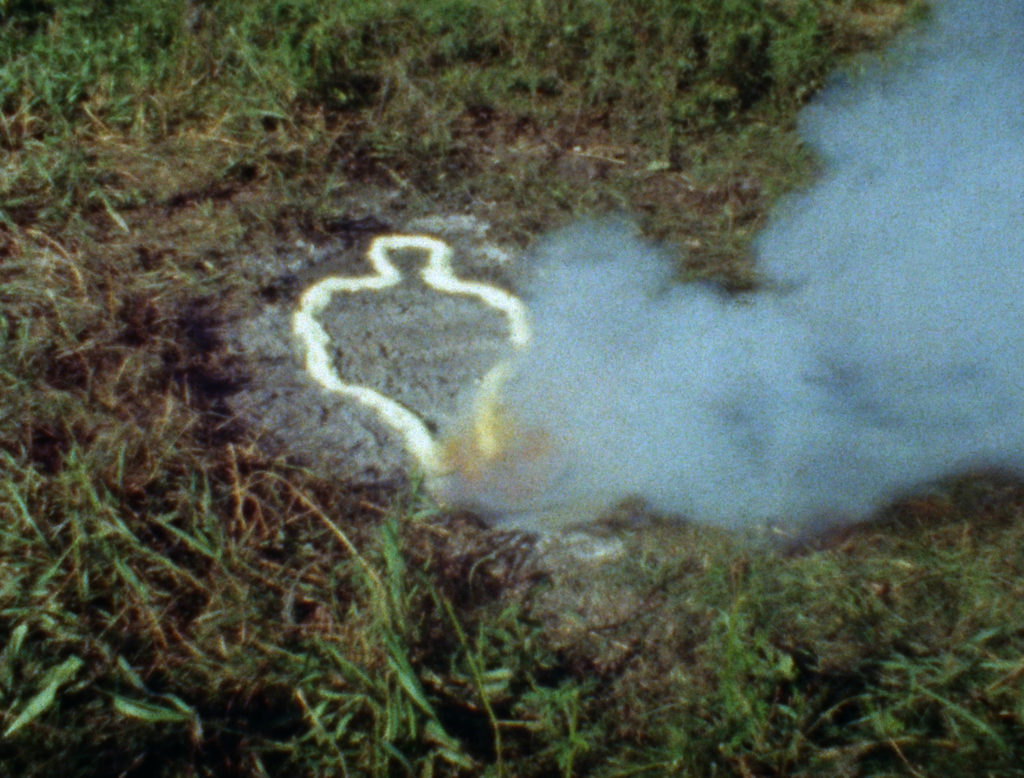
Ana Mendieta, Still from Untitled: Silueta Series (1978). © The Estate of Ana Mendieta Collection, LL. Courtesy of Galerie Lelong & Co.
The controversial death of Cuban-born artist Ana Mendieta has dictated much of her life story. On September 8, 1985, after an argument with her husband, the Minimalist artist Carl Andre, the conceptual artist fell to her death from a window in her New York City apartment. Andre, who denied any wrongdoing, was tried and acquitted after a three-year legal battle, as the case could not be proved beyond a reasonable doubt.
But there is much more to Mendieta’s story.
As a child during the early days of the Castro regime, she and her sister were taken out of Cuba in 1961 as part of Operation Peter Pan, a program organized between the US government and Catholic charities. The experience was a painful blindside for the then-12-year-old Mendieta, who would spend the next years in American foster care and would not be reunited with her mother for 5 years, and her father for 18.
It was her Cuban cultural and ethnic heritage that would most powerfully affect the artwork she created in the ’70s and ’80s, most famously in her Silueta Series (1973–80), in which the artist melded Land art, her own body, and performance in works that explored colonization, brutalization, and, in her Rape series, sexual violence against women.
We’d Cast: Rosario Dawson
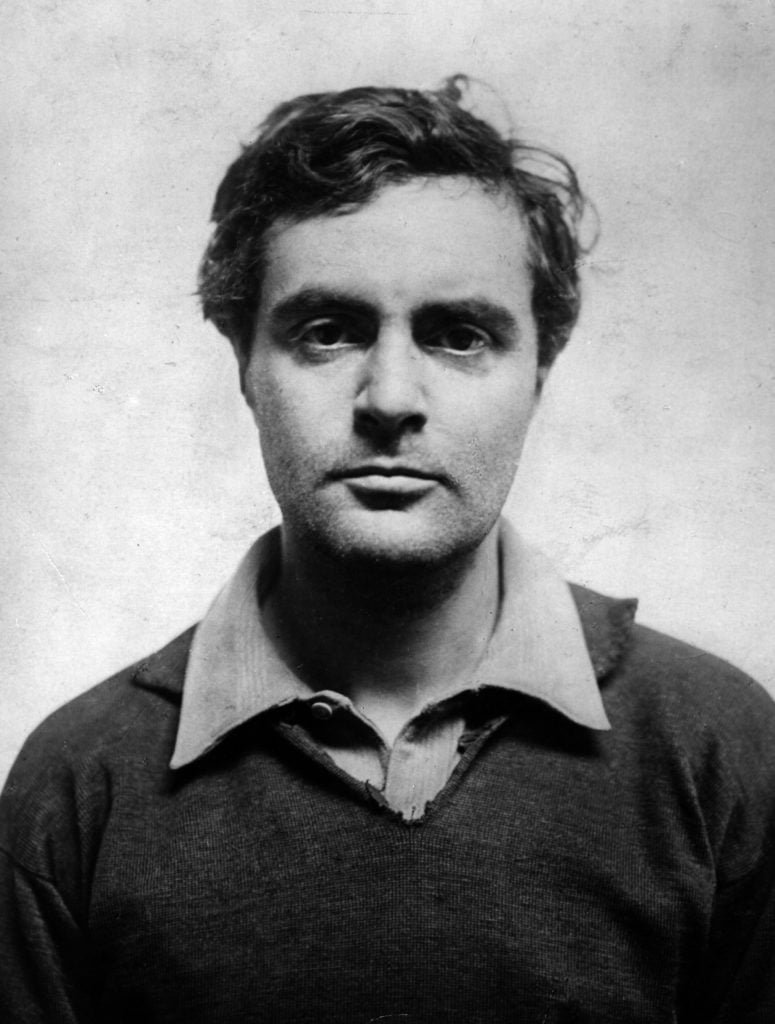
Amedeo Modigliani, circa 1909. Photo: Hulton Archive/Getty Images.
Amedeo Modigliani’s story is a tragedy actually deserves to be revisited. The 2004 biopic of his life, with the lead played by Andy García, has a dismal 4% rating on Rotten Tomatoes. Though the Jewish-Italian artist’s 1918 painting Nu couché sold for over $157 million at Sotheby’s last year, Modigliani was (without exaggeration) impoverished for every moment of his short life.
In fact, on the day of his birth in 1884, debt collectors came to his family home intent on seizing all their belongings, but were saved by an arcane Italian law that protected the possessions of new mothers.
But things didn’t get better from there: chronic illness plagued the artist from childhood, but he was never deterred from his art. In Paris, under the influence of his friend Constantin Brancusi, he developed his signature style of flattened, mask-like figures portraits by African, Egyptian, and ancient Etruscan and Greek sculpture.
Almost comically, Modigliani had only one solo show in his life, in 1917, but his inclusion of pubic hair on the portrait of a nude woman caused such an uproar the show was soon shuttered. In perpetual despair, he drank copiously, and his fellow artists nicknamed him Modi, a twist on the French word Maudit, meaning “cursed.”
Romantically, things fared no better. He is supposed to have had an affair with the Russian poet Anna Akhmatova, his frequent model, but he shared a common-law marriage to the artist and model Jeanne Hébuterne. Eight months pregnant with their second child when he died at age 35, Hébuterne was utterly distraught by his death. The day after he died, she threw herself out of a window at her parent’s home, killing both herself and the unborn child.
We’d Cast: Joaquin Phoenix
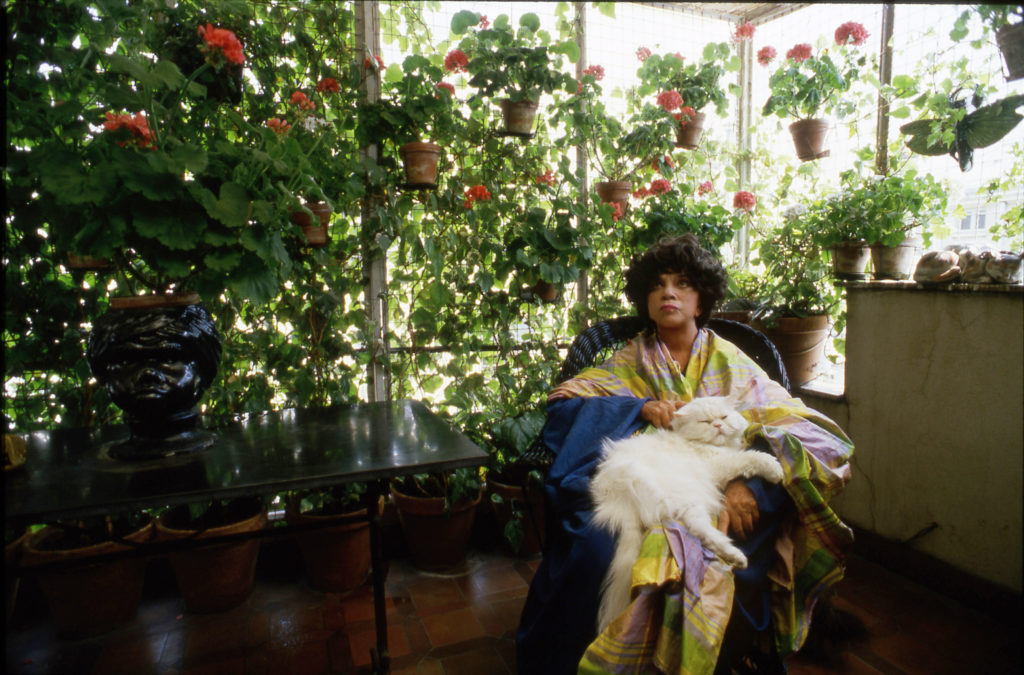
Leonor Fini at her country home in the Touraine region of France with one of her cats, 1986. Courtesy of Francis Apesteguy/Getty Images.
The consummate cat-lady artist Leonor Fini is a spectacle made for the screen.
Known for her fantastical dress and wild hair, she seems like a character cooked up by Tim Burton. The Argentine artist eschewed marriage, choosing to live always with two men (one as a boyfriend, one as a friend) and a dozen or so cats. Largely self-taught, Fini moved from Buenos Aires to Italy as a young woman and then onto Paris around, where she experimented with painting, graphic design, and costume and set design.
A friend of Salvador Dalí, Man Ray, and Max Ernst, she cultivated a Surrealist style (though she never considered herself a part of the movement) with works that dove deeply into the psyche of male and female dynamics. Perhaps unsurprisingly, Fini worked on costumes and sets for films such as Federico Fellini’s 8 ½, and John Huston’s A Walk With Love (Anjelica Huston’s first film).
There would certainly need to be an animal handler or two on the set of a film about her life. An assistant director on A Walk With Love once recalled that Fini’s cats traveled with her by limousine, “packed into their own car in little wicker baskets—four or five in the front and fifteen or so in the back.”
We’d Cast: Natasha Lyonne
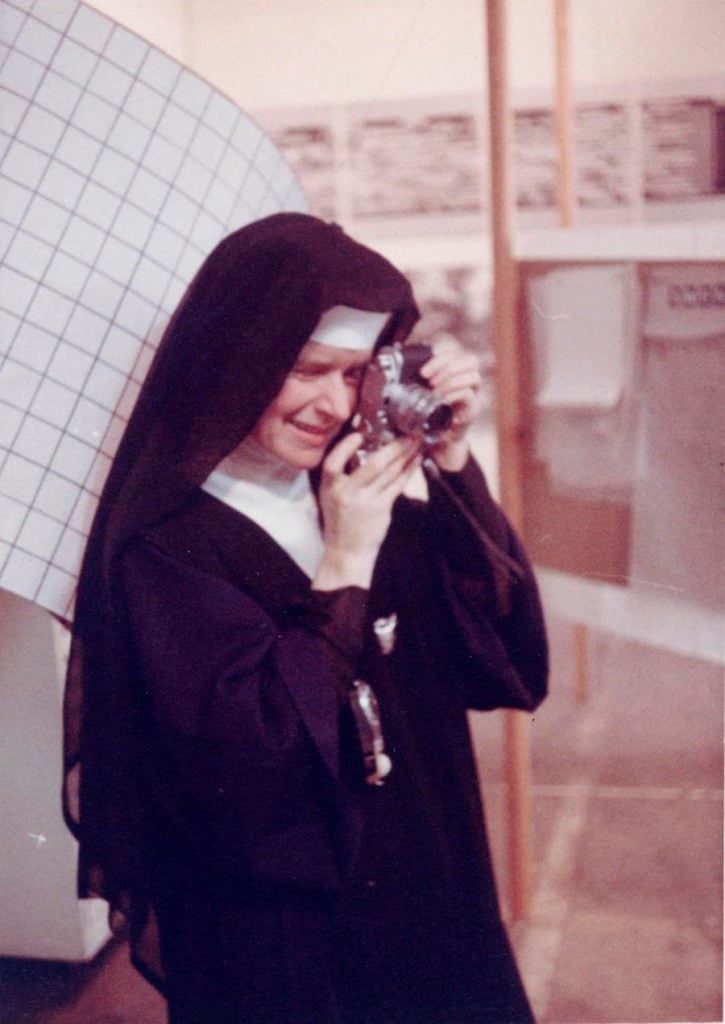
Corita Kent (circa 1966). Photo courtesy of the Corita Art Center, Los Angeles.
If The Sound of Music, Sister Act and Doubt have taught us anything, it’s that nuns make for great movie fare.
The story of Sister Corita Kent, the Pop-art nun, is a touching one. Born in 1918 in Fort Dodge, Iowa, Kent moved to Hollywood with her family that same year and later earned her BA at Immaculate Heart College in Los Angeles. In 1947, she enrolled in graduate school at the University of Southern California, where she focused on screen printing and finished her degree in 1951. By the following year, she was already making headway, winning awards for her prints in a Los Angeles County-wide contest.
In search of inspiration, she travelled to Europe and Egypt, collecting works of folk art, but her real revelation came in 1962, when she saw Andy Warhol’s Campbell’s Soup Cans at the Ferus Gallery in Los Angeles, which completely changed her style. Pop art, she realized, could be a powerful messaging tool for social justice—which is exactly what she made it into.
Kent went on to create works for the Vatican Pavilion at the 1963 Venice Biennale, but later met increasing resistance from conservative quarters of the Church, who disliked her spunky sensibility. Later, she sought dispensation from the Church and moved to Boston, before dying in 1986 from cancer.
We’d Cast: Frances McDormand
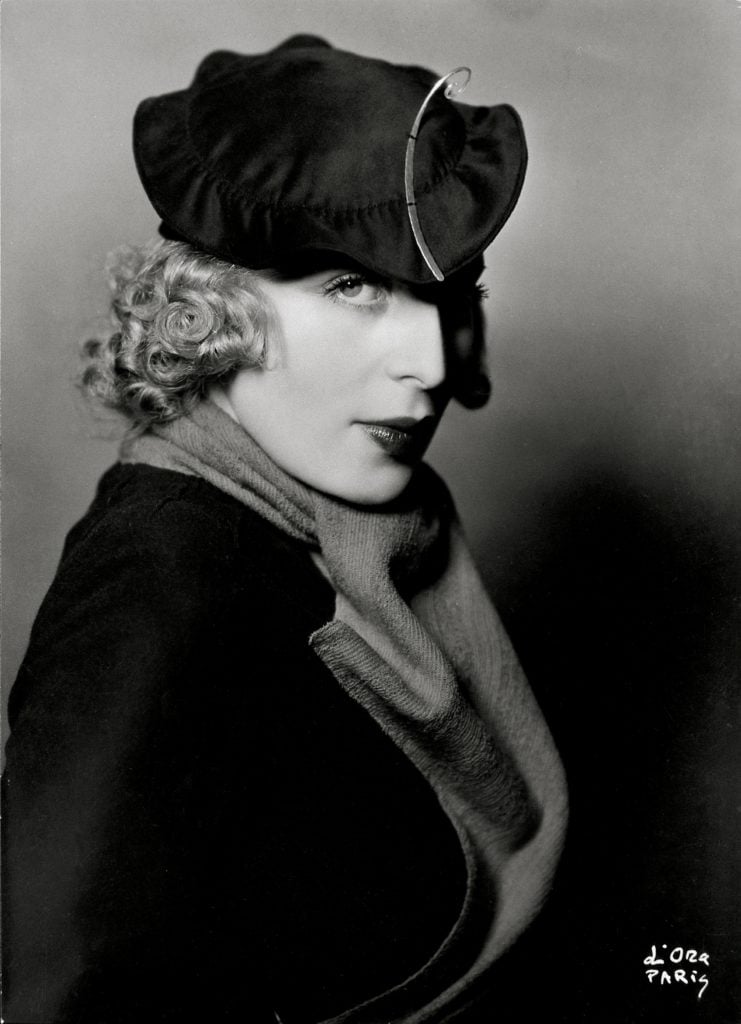
Tamara de Lempicka, Paris, 1932. Courtesy of Imagno/Getty Images.
The Roaring Twenties. The Russian high life. The shadow of war to the toast of Hollywood. The movie practically writes itself.
Act 1: She is born Tamara Rozalia Gurwik-Górska in 1898 in Warsaw, Poland (then ruled by Russia), into a wealthy family. When her parents divorce, she is sent to live with her aunt, where she develops a taste for the life of luxury. Wed at 18 to a man by the name of Tadeusz Lempick, she adopts her new moniker, which she feels has an aristocratic air.
Act 2: The Russian Revolution forces the young couple to Paris, and Lempicka devotes her attention to painting, developing a highly stylized aesthetic that incorporates elements of Cubism and Futurism. Perpetually restless, Lempicka divorces her first husband and goes on to marry an honest-to-goodness baron.
Act 3: On the eve of the Second World War, with the baron in tow, she moves to Hollywood, where she is, for a time, in the limelight. In her last years (and widowed after the baron died on an ocean liner) she retires to Cuernavaca, Mexico, where she is cared for by her daughter, Kizette. As artist’s lives go, quite a happy ending.
We’d Cast: Chloë Sevigny
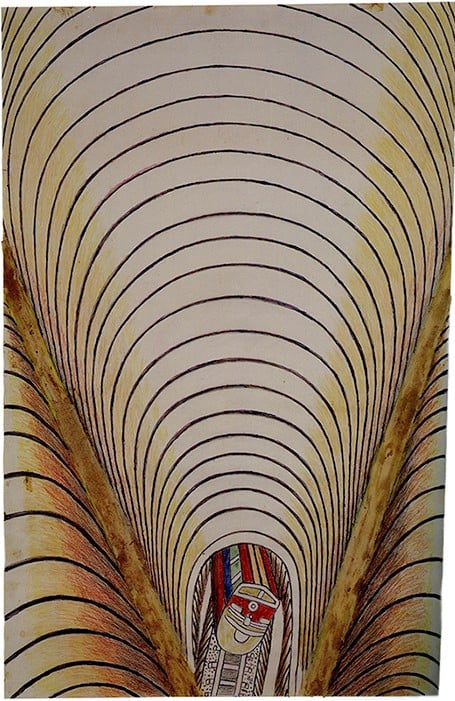
Martín Ramírez, Untitled (Train and Tunnel) (circa 1950).
Photo: Ricco/Maresca Galleries.
Now considered one of the most important outsider artists of the 20th century, Martín Ramírez spent the last 15 years of his life in DeWitt State Hospital in northern California where he was diagnosed as a catatonic schizophrenic. Around 1920, Ramírez had emigrated from Mexico to the United States, speaking no English and seeking work to support his wife and children. After years toiling on the railroads, he wound up homeless and then institutionalized.
In the last years of his life, he created hundreds of drawings that are now prized for their visual acuity and their combination of Mexican folkloric imagery, Modernist aesthetics, and all-too-relevant commentary on border relations and the state of mental health system.
We’d Cast: Diego Luna